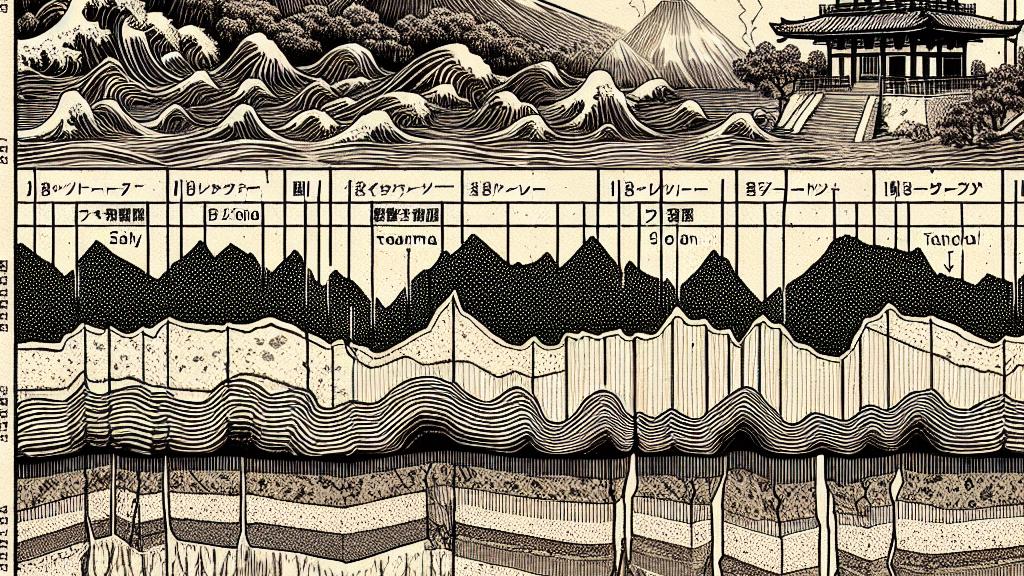Shocking Truths: Okinawa's Earthquake History Unveiled!
Overview
- Uncover the hidden historical earthquakes that shaped Okinawa.
- Learn how survivorship bias misleads our perception of seismic risks.
- Explore the implications of recent tsunami warnings for the region's safety.

Okinawa's Earthquake Perception
Okinawa is often perceived as a low-risk area for significant earthquakes, leading many to feel secure in their surroundings. However, this sense of security is built on a shaky foundation. Discussions with experts reveal that a lack of recent major earthquakes does not equate to a lack of historical seismic events. Research indicates that the region has experienced substantial earthquakes in the past, but these events may not have been documented appropriately. For instance, studies of sediment layers show evidence of past tsunamis and earthquakes that could have devastated the islands long before current records were kept. This gap in understanding emphasizes the need for a serious reevaluation of how residents perceive earthquake risks in Okinawa.
Understanding Survivorship Bias
Survivorship bias significantly influences our understanding of Okinawa's earthquake and tsunami history. This cognitive bias occurs when only the accounts of those who survived a disaster are considered, overshadowing the experiences of those who did not. In the context of devastating events, the absence of records from vanished communities creates a distorted sense of safety. As we look back at history, we must recognize that some powerful events may have completely obliterated populations, leaving no survivors to document their experiences. Notable examples from other countries, like the eruption of Mount Vesuvius that buried Pompeii, reinforce the necessity of accounting for lost narratives. Acknowledging this bias is crucial in shifting the perspective towards a more comprehensive understanding of past seismic activities and the risks they carry into the future.
Current Alerts and Historical Context
The recent tsunami warnings issued for Okinawa, predicting waves of up to 3 meters, serve as a stark reminder of the ongoing risks from natural disasters. Such warnings push local residents to confront their vulnerabilities and reevaluate their preparedness for potential seismic events. Given the historical context where significant earthquakes and tsunamis might have occurred but went unrecorded, it becomes evident that greater awareness and proactive measures are essential. The juxtaposition between historical evidence and contemporary warnings highlights an urgent need for public education on disaster preparedness. Residents must be informed not only about past events but also about the scientific understanding of seismic patterns that could suggest future threats.
Promoting Awareness and Preparedness
To truly safeguard against future risks, Okinawa must foster a culture of awareness and preparedness. Community engagement initiatives can play a pivotal role in educating residents about historical seismic events and current geophysical studies that indicate earthquake risks. Schools and local organizations can implement disaster drills and educational workshops on emergency plans, response strategies, and safe evacuation routes. These proactive measures could significantly strengthen community resilience and encourage information-sharing, ensuring that residents are not only aware of potential risks but are also equipped to respond effectively in emergencies. By bridging the knowledge gap and instilling a sense of readiness, Okinawa can prepare its communities for adapting to the realities of living in a seismically active region.
Conclusion: Reflecting on the Importance of Historical Awareness
In conclusion, understanding the complex relationship between Okinawa's historical seismic activities and present-day risks is vital for ensuring the safety of its residents. The lessons from past earthquakes and tsunamis underline the necessity of acknowledging both historical precedents and the realities of survivorship bias. By enhancing community education, conducting preparedness drills, and promoting open discussions about past events, Okinawa can cultivate a resilient population ready to face the uncertainties of natural disasters. A well-informed public stands as the best defense against both the psychological and physical impacts of such calamities, ultimately fostering a more secure and united community in the face of nature's unpredictability.

Loading...